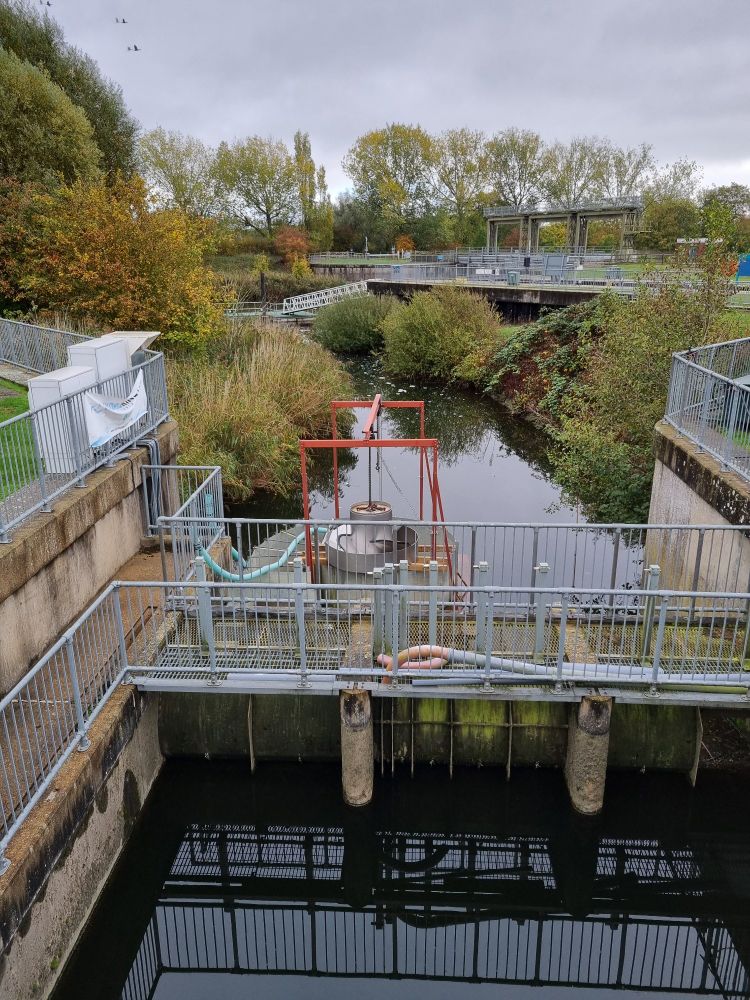
Rob Larter
@polarrobs.bsky.social
Polar marine scientist. UK Science Lead in Science Coordination Office of International Thwaites Glacier Collaboration. Views are my own.
On Mastodon @PoLaRobs@fediscience.org
On Mastodon @PoLaRobs@fediscience.org
Meanwhile, on the other side of the Atlantic were experiencing an abnormally mild November, and the same appears to be the case over most of the Northern Hemisphere.
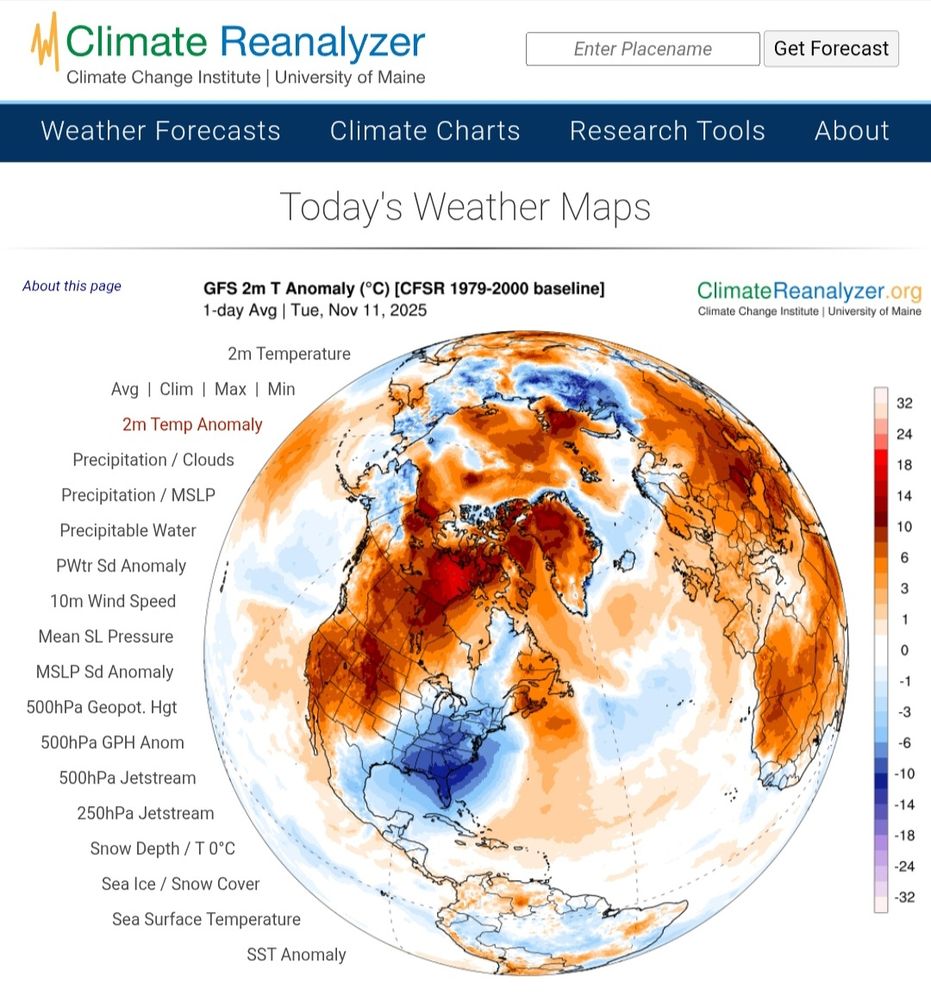
November 11, 2025 at 12:21 PM
Meanwhile, on the other side of the Atlantic were experiencing an abnormally mild November, and the same appears to be the case over most of the Northern Hemisphere.
I saw the robust sea defence in front of the wealthy part of Galveston during the field excursion at the end of the 'From Ice Sheets to the Coast: Sea-Level Rise Impacts' conference in Houston last year. It was noticeable how this didn't extend to the less affluent areas further west.

November 1, 2025 at 6:06 PM
I saw the robust sea defence in front of the wealthy part of Galveston during the field excursion at the end of the 'From Ice Sheets to the Coast: Sea-Level Rise Impacts' conference in Houston last year. It was noticeable how this didn't extend to the less affluent areas further west.
From the IPCC AR6 Working Group 1 report. Even with a very low emissions scenario global mean sea-level level rise by 2300 could exceed 3m.
On a high emissions scenario it could well be up to 7m, and
a rise greater than 15 m cannot be ruled out.
On a high emissions scenario it could well be up to 7m, and
a rise greater than 15 m cannot be ruled out.

October 31, 2025 at 10:03 PM
From the IPCC AR6 Working Group 1 report. Even with a very low emissions scenario global mean sea-level level rise by 2300 could exceed 3m.
On a high emissions scenario it could well be up to 7m, and
a rise greater than 15 m cannot be ruled out.
On a high emissions scenario it could well be up to 7m, and
a rise greater than 15 m cannot be ruled out.
Even without ice cliff-driven retreat or tidal intrusions into the grounding zone though, latest models predict continuing rapid ice loss this century that will accelerate further through the next century, e.g. doi.org/10.5194/tc-1...
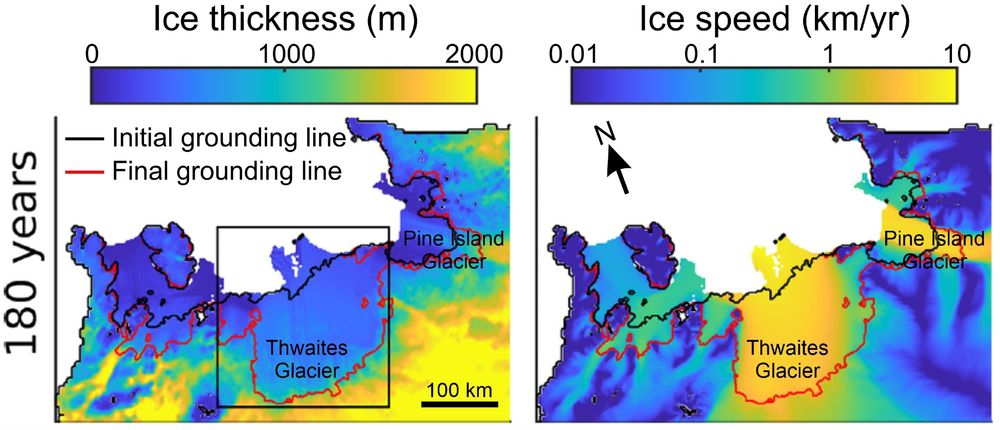
October 26, 2025 at 10:13 PM
Even without ice cliff-driven retreat or tidal intrusions into the grounding zone though, latest models predict continuing rapid ice loss this century that will accelerate further through the next century, e.g. doi.org/10.5194/tc-1...
Critical data to support improved ice sheet modelling have been gathered, including on the characteristics of the glacier bed and on what controls its lateral boundaries.
doi.org/10.5194/egus...
doi.org/10.5194/egus...
doi.org/10.5194/egus...
doi.org/10.5194/egus...

October 26, 2025 at 10:09 PM
Critical data to support improved ice sheet modelling have been gathered, including on the characteristics of the glacier bed and on what controls its lateral boundaries.
doi.org/10.5194/egus...
doi.org/10.5194/egus...
doi.org/10.5194/egus...
doi.org/10.5194/egus...
Analyses of rock samples obtained by drilling through the ice near the edge of a nearby glacier show it thickened again after previous thinning several thousand years ago. However, recovery took several millennia and a return of conditions in which it took place is unlikely.
doi.org/10.5194/tc-2...
doi.org/10.5194/tc-2...


October 26, 2025 at 10:06 PM
Analyses of rock samples obtained by drilling through the ice near the edge of a nearby glacier show it thickened again after previous thinning several thousand years ago. However, recovery took several millennia and a return of conditions in which it took place is unlikely.
doi.org/10.5194/tc-2...
doi.org/10.5194/tc-2...
Marine geological studies show ice shelves in front of Thwaites and Pine Island glaciers detached from seabed ridges ("pinning points") in the 1940s, initiating the modern retreat. However, most acceleration of ice loss has occurred since the 1980s.
doi.org/10.1038/natu...
doi.org/10.1073/pnas...
doi.org/10.1038/natu...
doi.org/10.1073/pnas...

October 26, 2025 at 10:03 PM
Marine geological studies show ice shelves in front of Thwaites and Pine Island glaciers detached from seabed ridges ("pinning points") in the 1940s, initiating the modern retreat. However, most acceleration of ice loss has occurred since the 1980s.
doi.org/10.1038/natu...
doi.org/10.1073/pnas...
doi.org/10.1038/natu...
doi.org/10.1073/pnas...
Imprints on the seabed left by the retreat of the glacier indicate a past episode of retreat even faster than is seen today when its grounding zone separated from a seabed ridge.
doi.org/10.1038/s415...
doi.org/10.1038/s415...

October 26, 2025 at 9:59 PM
Imprints on the seabed left by the retreat of the glacier indicate a past episode of retreat even faster than is seen today when its grounding zone separated from a seabed ridge.
doi.org/10.1038/s415...
doi.org/10.1038/s415...
Previously unrecognised tidally-driven seawater intrusions into the base of the glacier (its “grounding zone”) may hasten melting and retreat and this process is not included in current ice sheet models.
doi.org/10.1073/pnas...
doi.org/10.1073/pnas...

October 26, 2025 at 9:57 PM
Previously unrecognised tidally-driven seawater intrusions into the base of the glacier (its “grounding zone”) may hasten melting and retreat and this process is not included in current ice sheet models.
doi.org/10.1073/pnas...
doi.org/10.1073/pnas...
Robotic underwater vehicles discovered a host of new melt processes and imaged the undersides of ice shelves. Representing this new knowledge in ice sheet models is now an important challenge.
doi.org/10.1038/s415...
doi.org/10.1038/s415...
doi.org/10.1126/scia...
doi.org/10.1038/s415...
doi.org/10.1038/s415...
doi.org/10.1126/scia...


October 26, 2025 at 9:50 PM
Robotic underwater vehicles discovered a host of new melt processes and imaged the undersides of ice shelves. Representing this new knowledge in ice sheet models is now an important challenge.
doi.org/10.1038/s415...
doi.org/10.1038/s415...
doi.org/10.1126/scia...
doi.org/10.1038/s415...
doi.org/10.1038/s415...
doi.org/10.1126/scia...
In this and following posts I summarise some key findings.
Firstly, the last remaining area of ice shelf in front of Thwaites Glacier, the Thwaites Eastern Ice Shelf, is nearing break-up.
doi.org/10.1017/jog....
Firstly, the last remaining area of ice shelf in front of Thwaites Glacier, the Thwaites Eastern Ice Shelf, is nearing break-up.
doi.org/10.1017/jog....
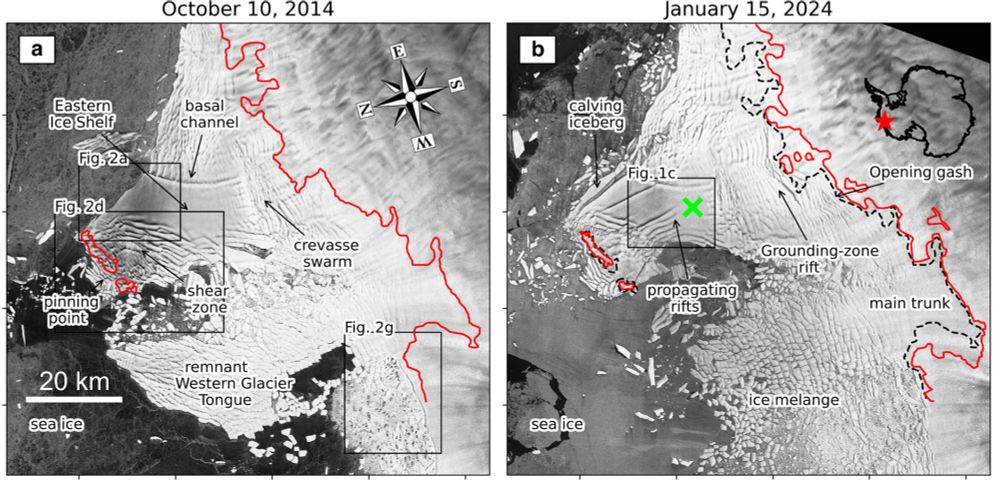
October 26, 2025 at 9:44 PM
In this and following posts I summarise some key findings.
Firstly, the last remaining area of ice shelf in front of Thwaites Glacier, the Thwaites Eastern Ice Shelf, is nearing break-up.
doi.org/10.1017/jog....
Firstly, the last remaining area of ice shelf in front of Thwaites Glacier, the Thwaites Eastern Ice Shelf, is nearing break-up.
doi.org/10.1017/jog....
This is because results show some processes are more complex than previously recognized, others we still don’t have enough data on or clear enough understanding of, and still others that are newly identified.

October 26, 2025 at 9:41 PM
This is because results show some processes are more complex than previously recognized, others we still don’t have enough data on or clear enough understanding of, and still others that are newly identified.
Latest models incorporating ITGC results indicate continuing rapid grounding zone retreat that will eventually accelerate as Marine Ice Sheet Instability takes hold. The possibility that ice loss will occur faster than current models predict cannot be discounted though.
📷Ted Scambos
📷Ted Scambos
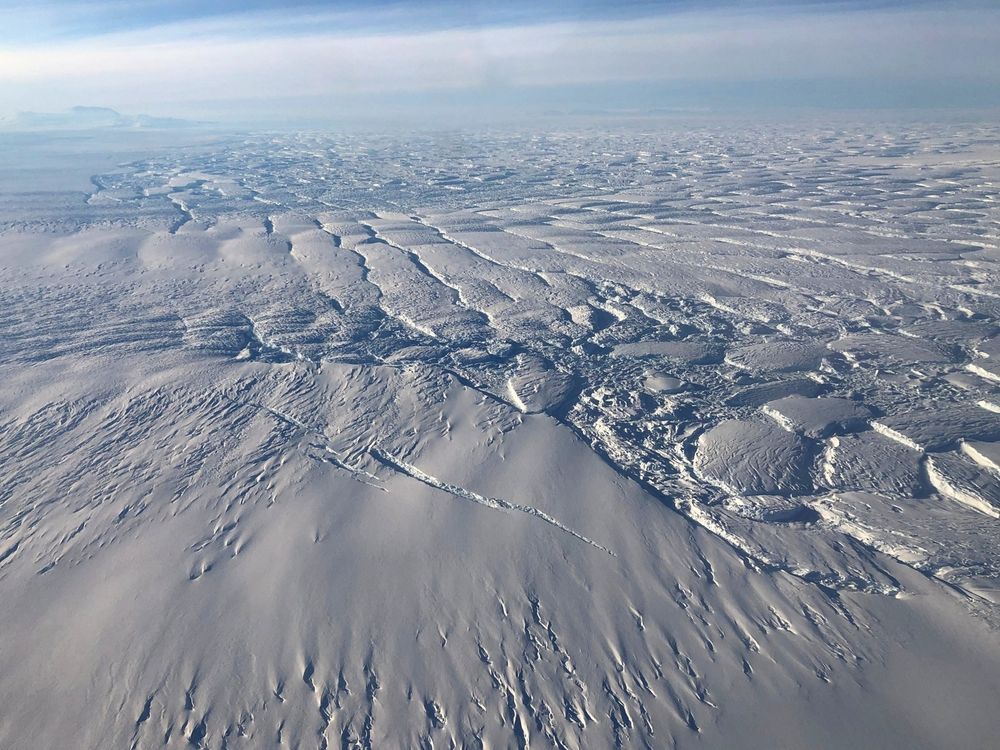
October 26, 2025 at 9:40 PM
Latest models incorporating ITGC results indicate continuing rapid grounding zone retreat that will eventually accelerate as Marine Ice Sheet Instability takes hold. The possibility that ice loss will occur faster than current models predict cannot be discounted though.
📷Ted Scambos
📷Ted Scambos
In summary, the outlook is grim. It is highly likely that Thwaites Glacier will eventually be lost, which will destabilise adjoining parts of the West Antarctic Ice Sheet, increasing the committed long-term rise in global mean sea level by more than 3 m.

October 26, 2025 at 9:37 PM
In summary, the outlook is grim. It is highly likely that Thwaites Glacier will eventually be lost, which will destabilise adjoining parts of the West Antarctic Ice Sheet, increasing the committed long-term rise in global mean sea level by more than 3 m.
🧪🧵 Future change to #ThwaitesGlacier, Antarctica constitutes the largest uncertainty in #sea-level rise forecasts. The Science Coordination Office of the International Thwaites Glacier Collaboration recently issued a briefing document summarising some key findings - thwaitesglacier.org/findings
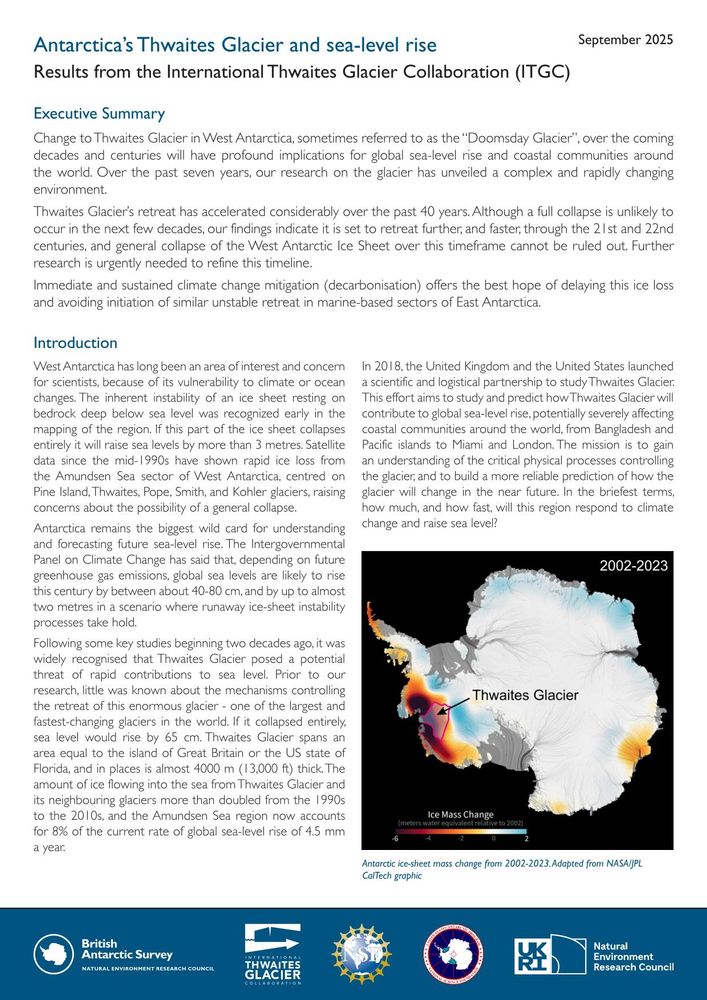
October 26, 2025 at 9:35 PM
🧪🧵 Future change to #ThwaitesGlacier, Antarctica constitutes the largest uncertainty in #sea-level rise forecasts. The Science Coordination Office of the International Thwaites Glacier Collaboration recently issued a briefing document summarising some key findings - thwaitesglacier.org/findings
Brent crude price today is $65.87 a barrel. For several periods over the past 20 years to price has exceeded $110 a barrel and the Japanese economy seems to have survived. An increase would give Japan and several other countries an incentive to speed up roll out of renewable generation.

October 25, 2025 at 4:44 PM
Brent crude price today is $65.87 a barrel. For several periods over the past 20 years to price has exceeded $110 a barrel and the Japanese economy seems to have survived. An increase would give Japan and several other countries an incentive to speed up roll out of renewable generation.
🧵🧪 Last week I accompanied a group from the University of the Third Age, Cambridge on a visit to the Denver Sluice Complex and while there gave a talk on 'The Changing West Antarctic Ice Sheet - Global and Local Implications'.
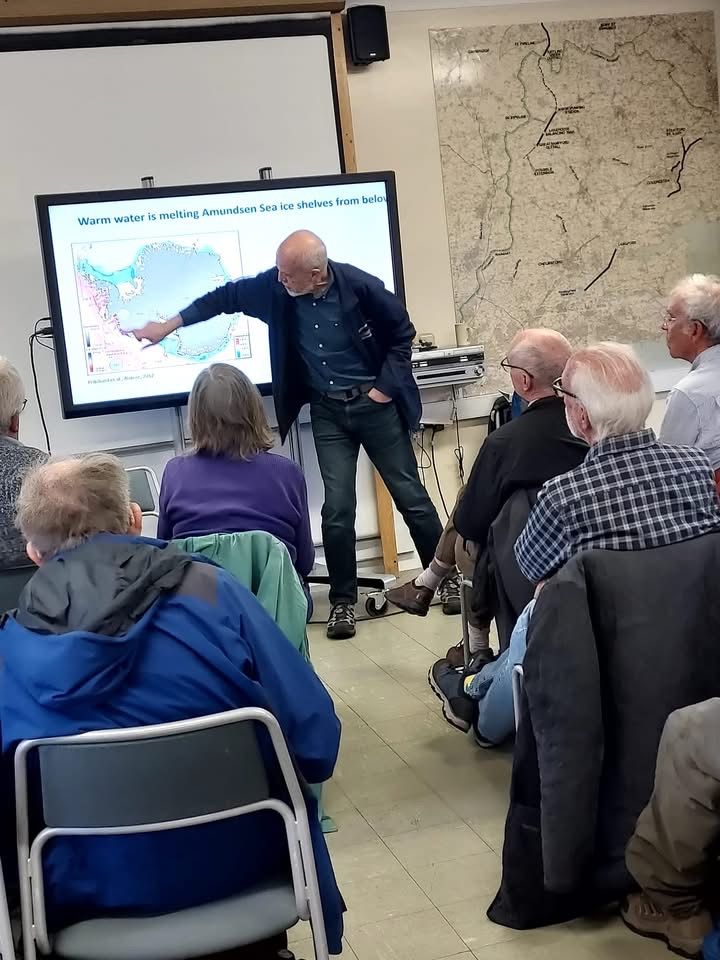
October 23, 2025 at 5:19 PM
🧵🧪 Last week I accompanied a group from the University of the Third Age, Cambridge on a visit to the Denver Sluice Complex and while there gave a talk on 'The Changing West Antarctic Ice Sheet - Global and Local Implications'.
A pleasure to have been able to visit the #RRSSirDavidAttenborough in Harwich yesterday and today to meet up with others who helped specify and commission the ship's scientific facilities. Loading of cargo for departure to the #Antarctic is nearly complete.
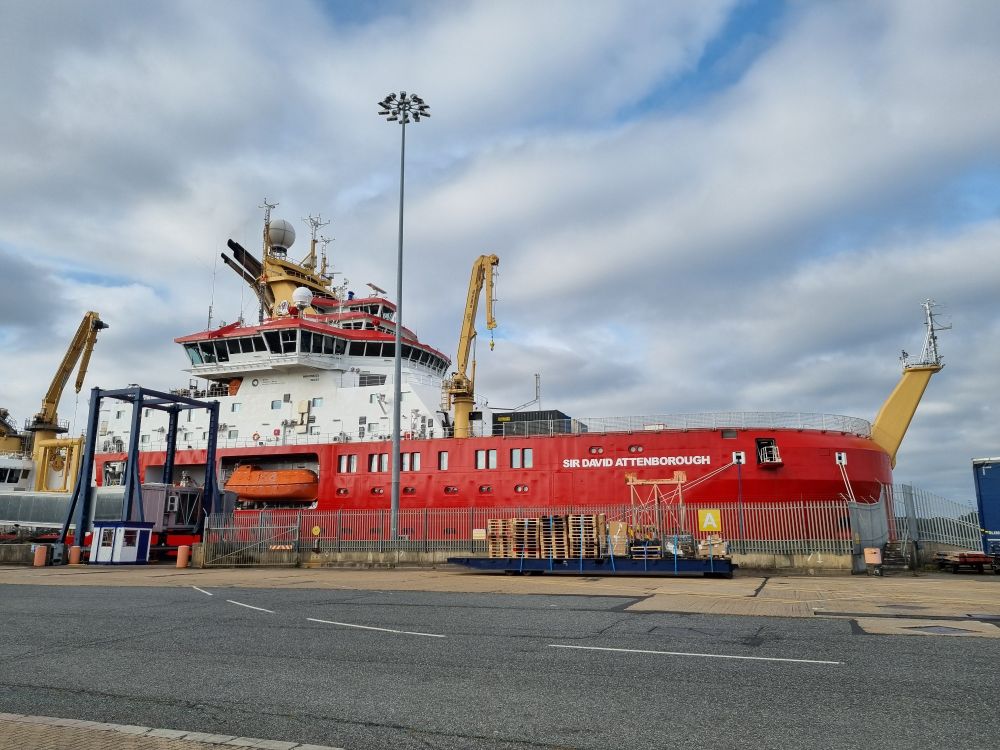



October 10, 2025 at 11:04 PM
A pleasure to have been able to visit the #RRSSirDavidAttenborough in Harwich yesterday and today to meet up with others who helped specify and commission the ship's scientific facilities. Loading of cargo for departure to the #Antarctic is nearly complete.
This evening there has been the second >magnitude 7 strike-slip intraplate earthquake in Drake Passage in the space of two months. This is unprecedented activity in this region since global seismograph networks were established.


October 10, 2025 at 10:33 PM
This evening there has been the second >magnitude 7 strike-slip intraplate earthquake in Drake Passage in the space of two months. This is unprecedented activity in this region since global seismograph networks were established.
🧵🧪🌊 According to the @nsidc.bsky.social sea ice index #Antarctic sea ice extent peaked this year on 15th September at more than 17.8 million km².
Graphic from @zacklabe.com
Graphic from @zacklabe.com

September 30, 2025 at 9:47 PM
🧵🧪🌊 According to the @nsidc.bsky.social sea ice index #Antarctic sea ice extent peaked this year on 15th September at more than 17.8 million km².
Graphic from @zacklabe.com
Graphic from @zacklabe.com
🧪🧵The deepest part of the three gravity cores collected nearest to Thwaites Glacier.
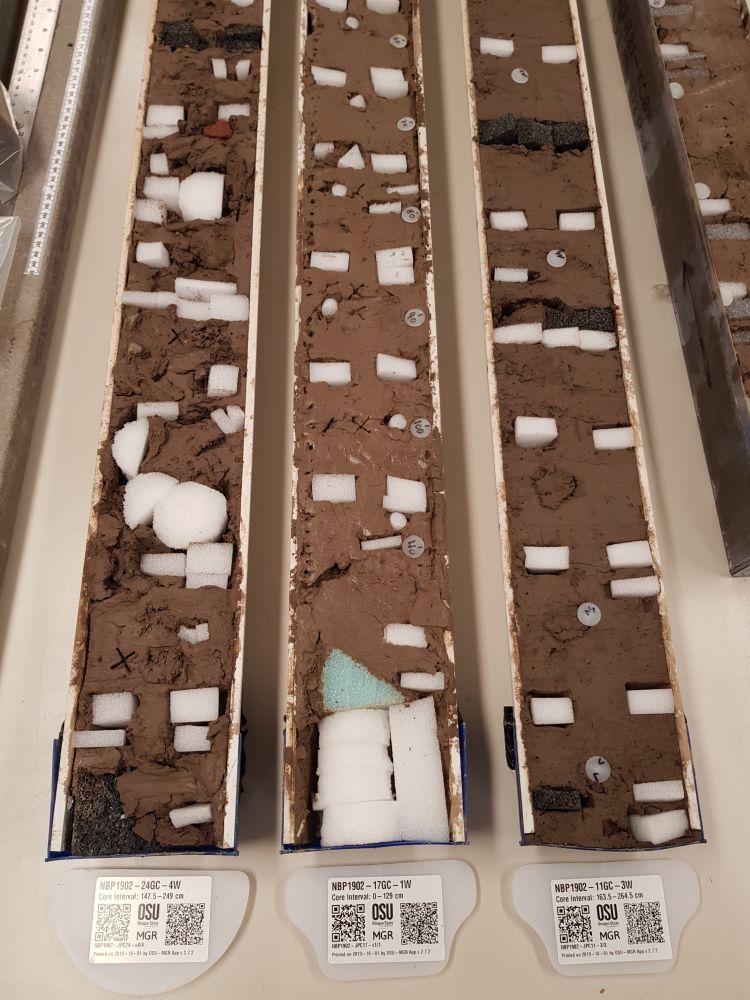
September 25, 2025 at 2:21 PM
🧪🧵The deepest part of the three gravity cores collected nearest to Thwaites Glacier.
A rack of D-tubes at Oregon State University's Marine and Geology Repository that contain some to the piston and gravity core sections collected by the Thwaites Offshore Research Project team during Amundsen Sea research cruises on the RV Nathaniel B Palmer.

September 24, 2025 at 6:11 AM
A rack of D-tubes at Oregon State University's Marine and Geology Repository that contain some to the piston and gravity core sections collected by the Thwaites Offshore Research Project team during Amundsen Sea research cruises on the RV Nathaniel B Palmer.
Back at the Marine and Geology Repository at Oregon State University for third time in four years to continue work on sediment cores collected on three International Thwaites Glacier Collaboration research cruises aboard the RV Nathaniel B Palmer.
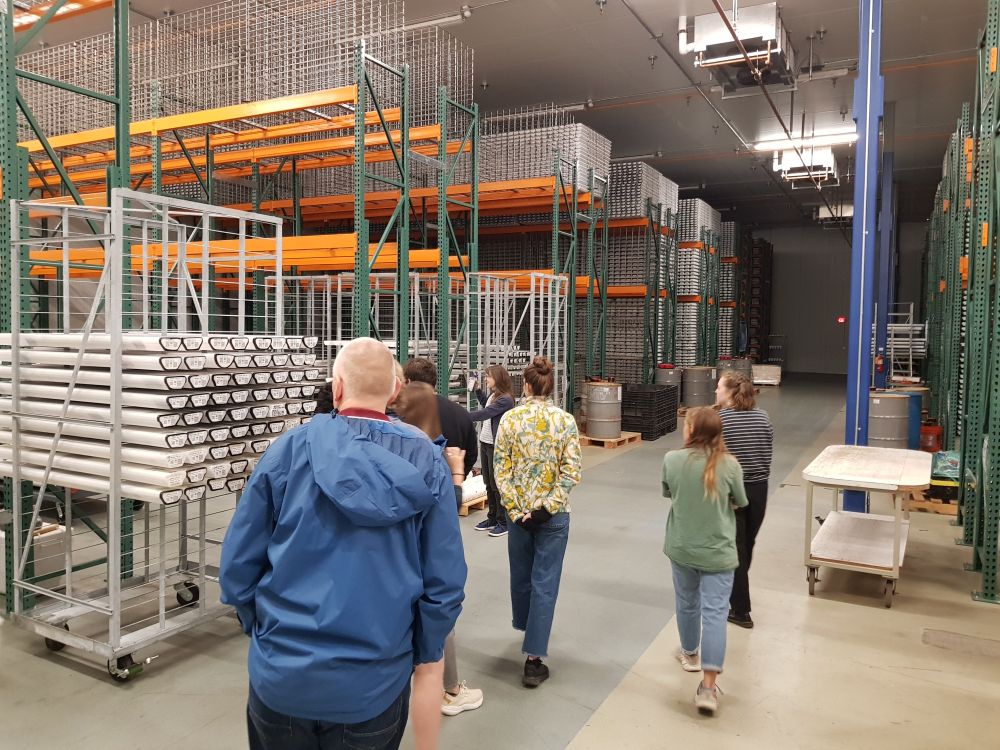



September 23, 2025 at 5:32 AM
Back at the Marine and Geology Repository at Oregon State University for third time in four years to continue work on sediment cores collected on three International Thwaites Glacier Collaboration research cruises aboard the RV Nathaniel B Palmer.





